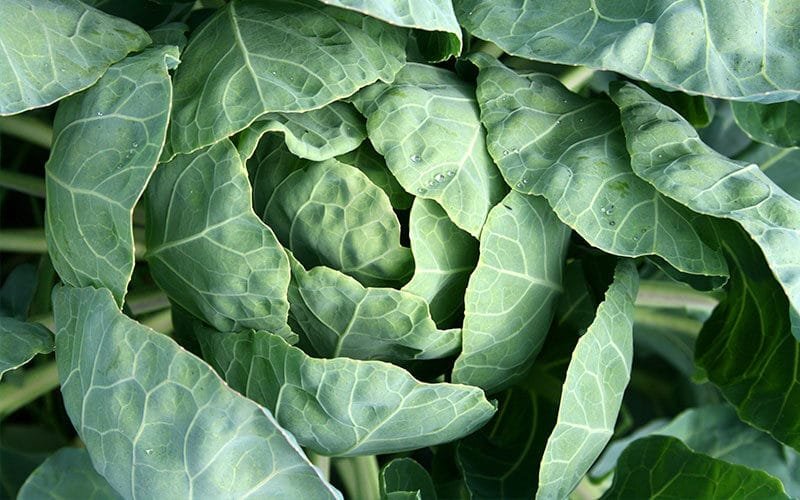Are you suffering from swollen legs? Swollen ankles? Have you just given birth and suddenly have engorged, painful breasts? Are you planning to visit your doctor for an appointment so that you can take some medication to fix the problem?
Did you know that the answer to all these problems may lie in your kitchen?
Believe it or not, the answer to these issues is the humble cabbage!
For centuries, cabbage has been known to treat excess swelling and inflammatory diseases. Not only is the humble cabbage packed with magnesium, potassium, vitamins C, A, and K, it also has fantastic anti-inflammatory properties and can effectively treat joint pain with quick results. According to an article in the New York Times, the humble vegetable has a high amount of phytonutrients, vitamins, anthocyanins, and glutamine.
Further, cabbage is beneficial for reducing breast engorgement among new mothers. It also relieves joint pain felt by arthritis patients. WebMD states that the anti-inflammatory properties of cabbages also help prevent diabetes, heart disease, and cancer.
Interestingly, reduced blood markers of inflammation are reported among people whose diet consists of cruciferous vegetables like cabbage. A study conducted on 1,000 Chinese women found that considerably lower levels of inflammation were reported among the women who consumed the highest amounts of cruciferous vegetables – when compared to the group that had consumed the least amount of cruciferous vegetables.
Does wrapping your joints with cabbage work?
According to the results of a randomized controlled trial published on PubMed, Osteoarthritis patients were made to test the effects of cabbage leaf wrap. The patients whose joints were wrapped in cabbage leaf reported significantly less pain within a month when compared to patients who received usual care. In addition to the above findings, patients were also less likely to report adverse effects or allergic reactions from cabbage leaf therapy – simply because it is a natural remedy.
Further, a 2018 study published by the National Center for Biotechnology Information also found that cabbage is an effective treatment for skin inflammation. It significantly reduced ear swelling and inhibited epidermal hyperplasia in mice with contact dermatitis.
These studies proved what our ancestors already knew – cabbage is an effective, natural, and safe way to treat skin swelling and inflammation. Not to mention that it is really easy on the pocket too!
How does wrapping cabbage leaves help reduce inflammation?
Cabbage contains a compound known as sulfur. This compound is known for its properties of reducing swelling and inflammation. A controlled trial also found that the cooling effect of cabbage helped reduce breast engorgement among new mothers. Further, the mothers who had received cabbage leaf treatment were more likely to be exclusively breastfeeding for a longer time.
You can read the article on cabbage leaf treatment for breastfeeding mothers here.
Cabbage is also proven to have a high amount of anti-inflammatory and antioxidant compounds, which is probably why it has been used to treat inflammation for several centuries.
How to make a cabbage leaf wrap for joint pain and swelling
(Note: This will probably take you less than five minutes. And way less time than making an appointment, visiting your doctor, buying the medication, and returning home. Also, did I mention that it works out to be way, way cheaper?)
Step 1:
Peel away the outer cabbage leaves before washing and drying the rest. (You can use a kitchen roll for this.) After peeling the outer cabbage, make sure to remove the hard stem of the cabbage leaves using a knife. Do not forget to bruise the leaves using a rolling pin, glass bottle, or hammer to release the cabbage juices.
Step 2:
You can choose to use a cool compress or a warm compress. For a cool compress, place the cabbage leaves in the refrigerator till the desired temperature is achieved. A warm compress can be made by placing the cabbage leaves in a microwave or an oven for a few moments. This is a great option as it makes the leaves more pliable. However, remember that the leaf should be warm – not hot.
Step 3:
Cover the painful joint completely with the cabbage leaves. Wrapping the leaves with a self-stick gauze bandage will hold them in place. If you choose to use warm cabbage leaves, you can retain the heat by wrapping the poultice with aluminum foil or plastic wrap. The result may not look pretty, but it will do the job!
Step 4:
The cabbage leaf wrap should cover the swelling for at least an hour. You can always choose to leave it on for longer. This treatment can be repeated with new cabbage leaves until the swelling completely goes down.
Pro tip: If you can, try and use red cabbage leaves. As per data from the NYU Langone Medical Center, red cabbage contains high amounts of anthocyanins. Anthocyanins are antioxidants that are effective in the treatment of swelling and joint pain. They also give the cabbage its color. Warning: Red cabbage may leave stains on your clothes, so do be careful!
Other home remedies that help reduce inflammation
1. Curcumin
Turmeric, which contains curcumin, is rightly known as one of the miracles of nature. Not only does turmeric help control blood cholesterol levels, eliminate free radicals to keep skin looking youthful and healthy, and improves digestion, it also (you guessed it) helps relieve joint pain. It has been touted as one of the most effective anti-inflammatory products because it efficiently reduces swelling, inflammation, and pain.
Unfortunately, because turmeric is a spice that is commonly sold by weight, it can be easily mixed with toxic powders such as lead and oxide to fool consumers. I personally recommend Naturalitic’s Mighty Turmeric (Curcumin) – it is third-party tested for quality and contains Bioperine.
Bioperine is a natural black pepper extract that helps in the absorption and processing of curcumin. Trust me – you won’t go wrong with this.
2. Massage
Massages are not just for relaxation and indulgence – did you know that they also help reduce inflammation? According to EverydayHealth, massages can treat ankylosing spondylitis, an arthritic condition that can adversely affect the spine’s flexibility over time. Ankylosing spondylitis is the result of the inflammation of the spinal joints.
Remedial and sports massages are commonly used to reduce swelling.
3. Heating pads
Heating pads work by improving circulation in a particular area, which in turn draws nutrients and oxygen to that particular spot. This circulation, according to HealthLine, reduces inflammation and relieves pain. It also repairs damaged muscles.
Heating pads of several types are available in the market nowadays – from infrared heating pads, which allow the heat to penetrate deeper into muscles, to an electric heating pad featuring several settings that can be customized.
If you do not have access to a heating pack, you can use a gel pack for similar results. Microwave the gel pack for a minute or two before applying it to the swollen area.
4. Epsom salt soak
Epsom salt is easily available in supermarkets and drugstores – and not to mention cheap. Running a warm bath and adding Epsom salt to it can not only de-stress you, but it can also soothe painful muscles and reduce swelling caused by arthritis. According to Mayo Clinic, you should soak for at least 15 minutes in an Epsom salt bath. The recommended dosage for adults is two cups of Epsom salt per gallon of warm water. A study conducted in 2015 found that magnesium salts are an effective treatment for inflammation.
5. Exercise/Movement
Exercise is more than just about losing or maintaining your weight – it can also help your joints stay healthy! According to recent research by the University of California San Diego School of Medicine, even one 20-minute session of moderate exercise can reduce inflammation and swelling. This is because moderate exercise stimulates the immune system, which in turn exhibits an anti-inflammatory cellular response. Swimming is an especially effective form of exercise that reduces swelling and inflammation – while being painless.
However, make sure you consult your doctor before exercising a swollen body part.
Conclusion
Advancements in medicine have had many pros, but a few cons have emerged as well – Humans have forgotten the tried and tested, natural methods to a healthy body in favor of chemicals that deliver speedy results.
But you should remember that not every ailment warrants a visit to the doctor or the chemist – some health problems, such as swelling, can be fixed just as easily at home. Studies have proven that applying cabbage leaves or soaking in an Epsom salt bath is just as effective and (obviously!) much cheaper. They are also safer and have fewer side effects.
Remember, if you do not have the time for an at-home remedy, you can always use natural products like Naturalitic’s Mighty Turmeric (Curcumin) instead of ingesting drugs and medication.
1. https://pubmed.ncbi.nlm.nih.gov/26889617/
3. https://www.healthline.com/nutrition/benefits-of-cabbage#TOC_TITLE_HDR_3
4. https://www.webmd.com/food-recipes/ss/slideshow-cabbage-benefits
5. https://www.ncbi.nlm.nih.gov/pmc/articles/PMC5909311/
6. https://pubmed.ncbi.nlm.nih.gov/24377584/
8. https://www.physio.co.uk/treatments/massage/benefits-of-massage/reduced-swelling.php
10. https://onlinelibrary.wiley.com/doi/abs/10.1111/j.1365-4632.2005.02079.x
11. https://health.ucsd.edu/news/releases/pages/2017-01-12-exercise-can-act-as-anti-inflammatory.aspx

